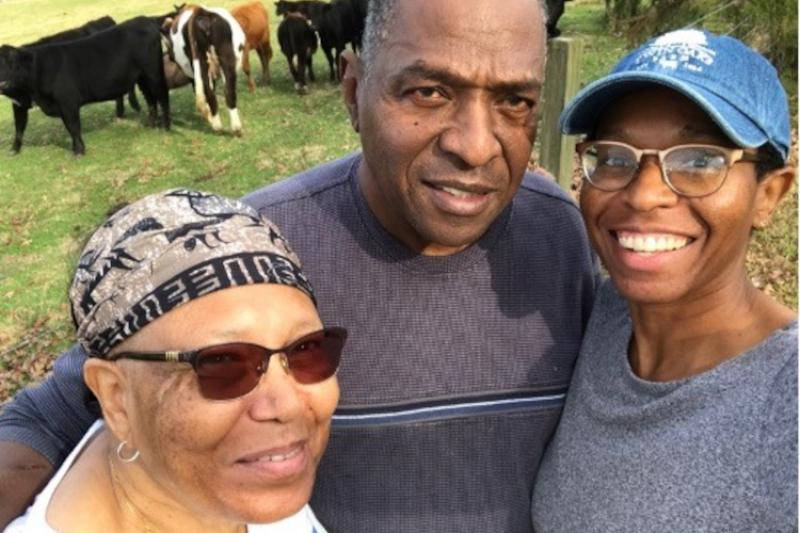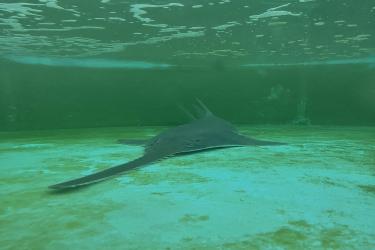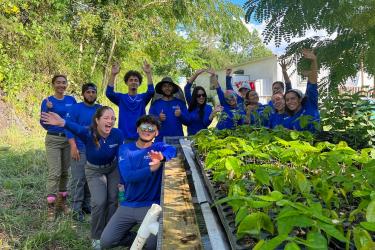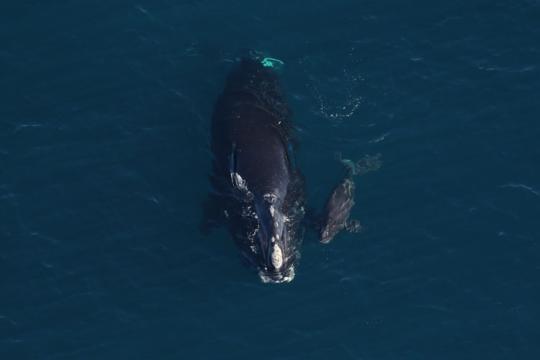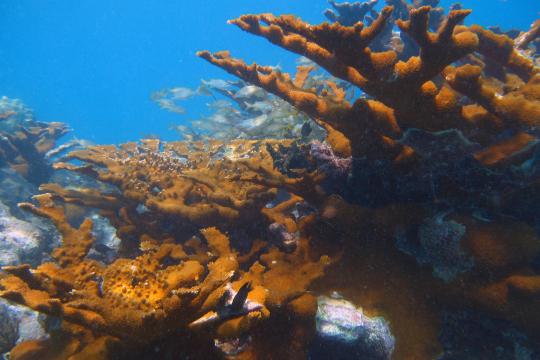Where did you grow up?
My parents, Emma and Leroy Duncan, raised me far from the ocean on a farm surrounded by cows, in the small rural city of Newnan, Georgia. I grew up in a Caribbean and African American household and celebrated both my dad’s Trinidad and Tobago traditions, food, and celebrations and my mom’s African American traditions with her side of the family.
Where did you go to school and in what subject did you get your degree(s)?
I developed a love for manatees in high school and I knew that the only way to help with conservation efforts was to get a degree in marine biology. So, I enrolled at Savannah State University in 1997 and completed my Bachelor’s degree in Marine Science in 2001. After graduating, I received NOAA’s Educational Partnership Program with Minority Serving Institutions Graduate Sciences Program scholarship, which supported my Masters in Fisheries Biology at Clemson University in South Carolina. Although I pursued fisheries, I still maintain my love for manatees and continue to help with conservation efforts led by the Save the Manatee Club. In 2021, I completed my Doctorate in Educational Leadership at Florida Agricultural and Mechanical University, with the assistance of NOAA’s Advanced Studies Program scholarship.
How did you come to work at the Southeast Fisheries Science Center?
Through NOAA’s Graduate Sciences Program scholarship, I was converted from a NOAA Graduate Sciences’ Scholar into a federal position as a Fish Biologist after graduation from Clemson University in 2003. My graduate research working on sturgeon reproduction was best suited for what was then the science center’s Age, Growth, and Reproduction group in Panama City, where I have been since 2003. I have also tracked the movement of Gulf sturgeon following Hurricane Ivan which made landfall in 2004 near Pensacola, Florida.
What do you do at the science center?
Currently, I am doing histology within the Life History and Biology Branch of the Fisheries Assessment, Technology, and Engineering Support Division. I assess spawning for various species of snappers and groupers. This involves taking a thin section of the ovary to identify cell structures, under a microscope, that are indicative of present or past spawning events.
Histology helps to determine maturity and assists with population assessments. Over the past 19 years my interests have expanded to include educational research, to understand barriers related to diversifying marine science and NOAA’s scholarship programs. Through my outreach activities, I share with students the amazing research conducted by biologists at NOAA to help with local ocean conservation efforts.
What do you like most about your position?
I love interacting with people and encouraging more students, particularly from diverse backgrounds, to pursue marine science and get involved in protecting their “blue backyard.” I am proud to represent NOAA in my community and provide information about NOAA scholarships and research. As a recipient of a life-changing opportunity from NOAA, I want to do my part in assisting and mentoring students to achieve their dreams of working in the field of marine science.
What was your experience with the advanced studies program?
My decision to pursue a doctoral degree was solely made because of the opportunity to receive tuition assistance from NOAA’s Advanced Studies Program. I am grateful for the support that I have received from NOAA and my Panama City Lab colleagues throughout my educational journey.
February is Black History Month. What does this month mean to you?
Each year I look forward to February because of the significance this month holds for African Americans, to highlight our achievements. As the first and only African American female fish biologist at the Panama City Lab, I want to be an example and encourage other Black females to enter this field. The lack of diverse representation is often a deterrent for students pursuing the field of fisheries.
Through my outreach efforts, I share with students that their voices and presence are needed. Since I was an undergraduate at Savannah State University, I have been fortunate to have Dr. Dionne Hoskins-Brown as my role model and mentor within NOAA Fisheries. Her accomplishments and trail blazing as an African American female fish biologist provided me with the confidence to pursue and remain in the field and in turn do my part to assist with diversity efforts.
I am grateful for Dr. Hoskins-Brown, my parents, and every African American who made tremendous sacrifices to create a path for me.
What do you like to do outside of work?
I like to do marathons—not the running kind—of watching the Golden Girls on Sundays. It recharges me for the week!
